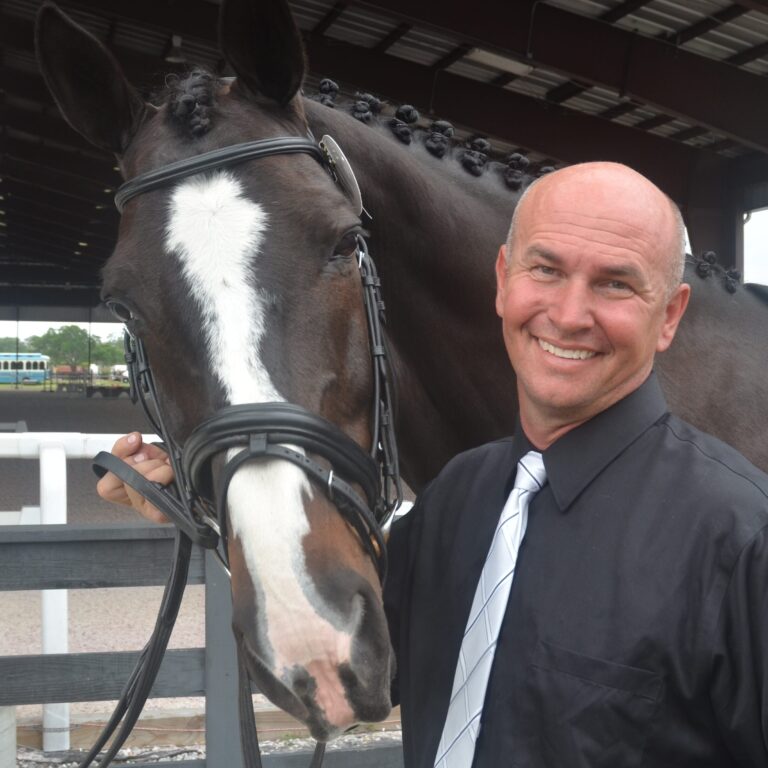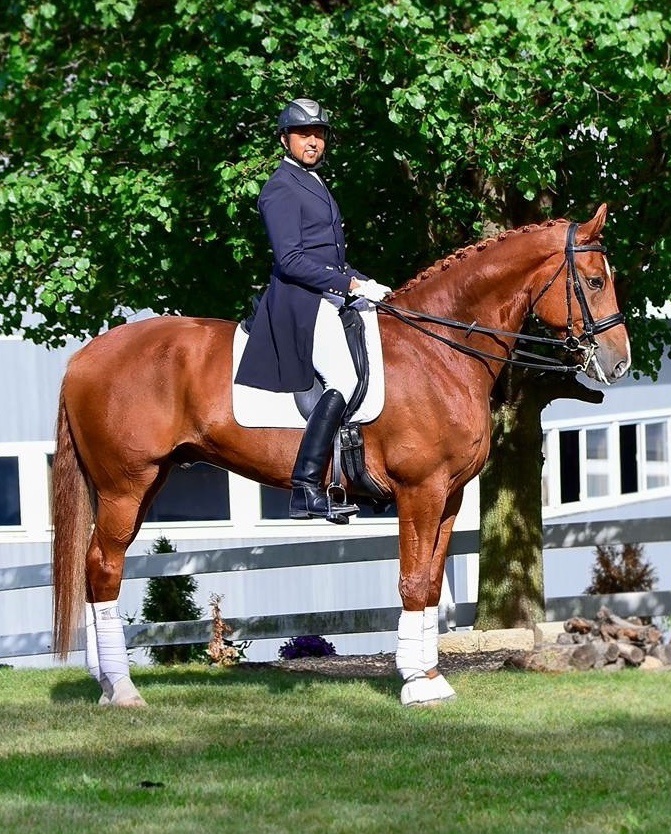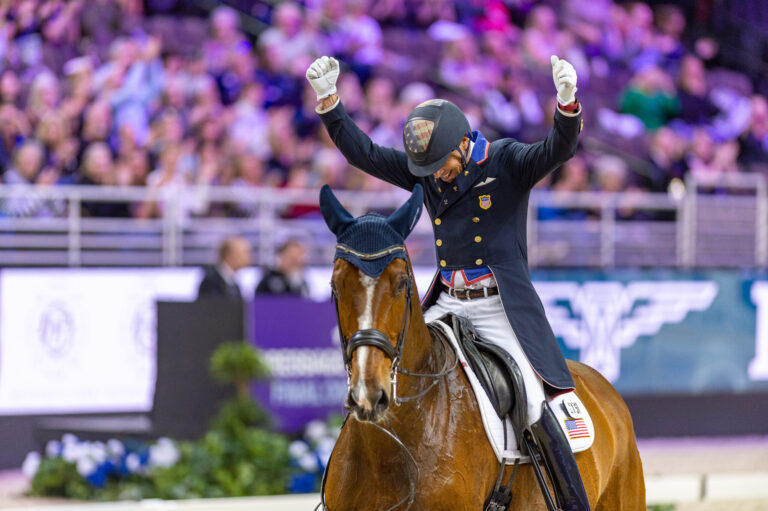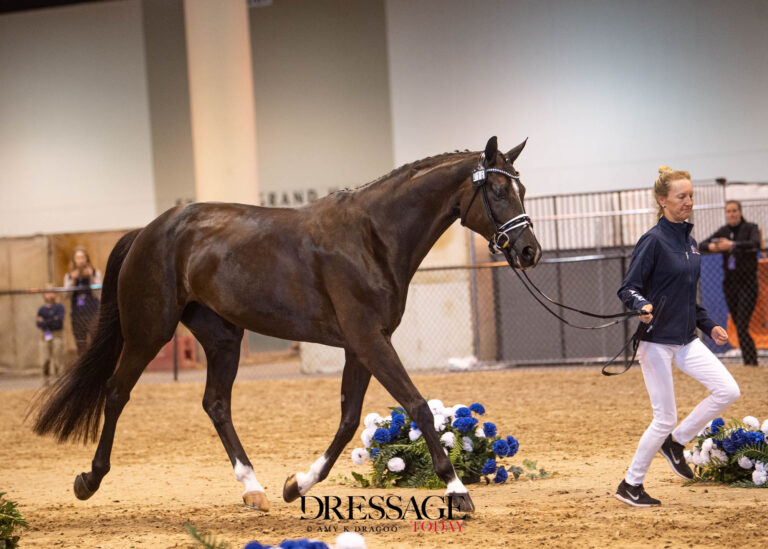Stallions are often thought to be the most influential part of the stallion-mare mating equation. If they consistently throw successful foals, they quickly develop national and international reputations and earn high stud fees. Stallions also are the ones in the spotlight: in breeding issues of equine magazines, in advertisements for breeding farms and in every hopeful trainer’s and competitor’s heart. But what about the mare?
Genetically, the mare is responsible for at least 50 percent of the foal. Some breeders even argue by observation that the dam affects the offspring at a rate of 60 percent or more. In the majority of cases, breeding experts will tell you the mare’s characteristics override the stallion’s. A rule of thumb in the breeding world is that you can breed a mediocre stallion to a great mare and still have a nice foal. But breed a great stallion to an undesirable mare? The results will be disastrous. Temperament, conformation and talent are each critically tied to the mare’s genetic structure, a structure she passes from generation to generation. Therefore, understanding the mare’s crucial role in the breeding process is an undeniably essential part of the breeding equation.
In this article, five of Europe’s top breeders-with a combined 200 years of experience-shed light on why novice breeders should spend extra time, effort and care when it comes to choosing just the right mare to breed.
•Hans-Yngve Goransson is situated in Trelleborg, Sweden, where he has a group of broodmares and where he bred the Swedish Warmblood stallion Björsells Briar 899. Briar is the World Breeding Federation of Sport Horses’ number-one stallion and also the 2000 Olympic mount of Jan Brink.
•Hermann Meyer breeds Hanoverians at his farm in Allwörden, Germany. He bred the 1998 Hanoverian Stallion of the Year, Weltmeyer, and top sire World Cup I as well as more than 50 approved stallions. His dressage breeding mares include the bloodlines of famous stallions Warkant, Bolero, Lauries Crusador xx, Cavalier xx and Bonaparte.
•Ingo Pape owns Hengststation Pape GmbH in Hemmoor, Germany, and breeds Oldenburgs and Hanoverians. He raised Donnerwetter, sire of dressage legend Donnerhall, and bred Oldenburg State’s Premium Mare Primavera, by Donnerhall out of Paola.
•Bert Rutten, along with his father, Olympian Jo Rutten, runs Stal Rutten in Hunsel, the Netherlands. From a successful damline, Bert Rutten bred the Dutch Warmblood Ampere, whom he rode in the 1984 Olympics and the 1986 World Championships, where they helped the Dutch team win a silver medal.
•Gudula Vorwerk-Happ owns Gestüt Vorwerk, one of Germany’s foremost Oldenburg breeding facilities in Cappeln. Her stallions include Lisa Wilcox’s 2002 World Equestrian Games mount, Relevant, and Wilcox’s 2002 World Cup Dressage Final partner, Rohdiamant.
The Mare Factor
“Breeders often make the mistake of thinking that mares are not as important as stallions, and that is not true,” says Bert Rutten. “My Olympic partner Ampere’s sister, Epolita, really stamped her offspring,” he says. “All of her foals looked alike, and they were very successful dressage competitors.”
The mares are the genetic basis of the breeding equation, explains Ingo Pape. The damlines are the origin of all breeding products and are passed consistently through all generations. “It is easier to switch to a different stallion if a certain combination of mare and stallion does not produce a good foal,” Pape says. “If you have a mare with a negative trait, you can try to select the right stallion to override that trait, but that approach will seldom succeed completely. Mares pass on everything-not only their appearance, health, character, temperament and movement, but little things such as ticklishness, ear shyness and chewing on the reins. Every little thing moves from generation to generation.”
Gudula Vorwerk-Happ says that a very good mare can be bred to a not-so-good stallion and she will still produce a useable product. However, when a very good stallion is bred to a not-so-good mare, it is very rare to get a nice foal. “A foal doesn’t just inherit physical traits from the mare,” she says. “In the formative first months after birth, the foal takes on many characteristics of the mare’s behavior. The foal’s personality will often become identical to the mare’s. Therefore, it is dangerous for a breeder to overlook the mare’s powerful influence on her baby.”
But, cautions Hermann Meyer, “in our modern age of [artificial] insemination, where the stallions are booked to breed up to 600 mares a year, the stallions have to be exceptionally good to ensure our breeding goals are maintained.”
A Good Mare Prospect
To decide whether or not to breed a mare, top breeders first study a mare’s pedigree. “I want to know exactly what I’ll get when I breed a mare,” says Hans-Yngve Goransson. “You can’t just take a wonderful mare who looks like a beauty queen and expect a perfect foal. You really must know that mare’s pedigree. How safe is the mare’s background? If she is the number-one mare in the world and is mixed with a certain stallion, she might not throw a beautiful foal.”
“Heredity is everything,” agrees Rutten. “A mare’s or stallion’s smallest habits will always show up again, even if it’s several generations down the line.”
“The mare isn’t the only one who passes on her qualities,” says Meyer. “Her lineage-usually up to the sixth generation-is passed on as well.”
Just as important is studying the mare’s progeny to make sure she’s passing along her positive traits. “I want a mare that stamps her offspring,” adds Rutten. “If I put an excellent mare with a not-so-good stallion, she should produce a way-above-average foal.”
In Pape’s program, the mare Pirola, a Hanoverian by Pik Koenig out of the foundation mare Franka by Frustra II (full brother to Pik Bube), has been a giant success. “She has probably produced the most successful offspring, such as Donnerschlag, a premium Oldenburg stallion who was successful up to Grand Prix,” Pape says. “Pirola was a medium-sized bay who had a lot of feminine charm and a big, wise eye. She passed on a lot of positive characteristics, such as rideability, willingness to work and beautiful gaits.”
Charis-the dam of Björsells Briar 899 and a Swedish Warmblood-is a very typical broodmare, says Goransson. “She is calm and nice. She is very rideable, has nice movement, jumps well and is easy to get pregnant. Her pedigree is very consolidated and strong: She has many top horses in each generation of her past.”
The mare also should produce above-average progeny from different stallions, says Meyer. Anka produced Weltmeyer with World Cup I; Laura with Lauries Crusador xx and Granda with Grande.
Breeders also take into account a mare’s physical characteristics and movement when deciding whether or not to breed her. “I look for a sporty type with a big frame and correct and clean lines,” says Meyer. Weltmeyer daughter, Wildrose, is such a type, placing second in the conformation test at the European Championships in Verden.
“The mare also has to have a lovely eye” and three good gaits, says Vorwerk-Happ. Elektia 5, the dam of Rubinstein’s sons Rohdiamant and Royal Diamond, had a very good character, personality and movement. She was very fertile, and gave birth to her last foal when she was 24 years old.
Rideability and temperament are critical, too. “A mare has to have character and the desire to work,” says Rutten. “Workability is very important. If you have a foal that’s not the best foal, but he likes work, he is still useful for everyone.”
“The mare should have a sociable and friendly character and have a tremendous personality,” adds Vorwerk-Happ. In addition, she needs a mothering instinct.
“She has to have good social behavior toward the foal,” Meyer says.
Last, but far from least, is a mare’s general health and reproductive ability. “People often forget the importance of fertility,” says Goransson. “If you have a perfect mare that is very difficult to get in foal, that is not good.”
If a mare has stillborn foals for two or three years, genetically deformed foals or foals with severe conformation faults, she should not be bred again. “But sometimes it is difficult to tell if the foal’s problems are from the mare or from the stallion,” Goransson says. “Nature can be wrong and sometimes makes mistakes, so it is important to try more than once if you do encounter a problem, because it is not likely to happen again.”
However, remember that not all problems show up immediately. “Now I know that most exterior problems and defects are very often inheritable genetically and to my great disappointment, these traits often wait until the second generation to show up,” says Vorwerk-Happ.
At the very least, a breeder should reevaluate his mares every year to make sure they still meet the current criteria of good foaling mares. “The most important thing for a breeder is to have enough self-criticism to be able to honestly judge the quality of his broodmares,” says Pape. “Don’t worry about only having a few mares. If your mares are high quality, it is not a problem to produce good offspring. One should only breed the best mares and sell the ones that have not proven to be good enough.”
Making a Match
When deciding which stallion to breed to a mare, “much of it is trying and seeing what happens,” Rutten says. “For example, I had success introducing some Trakehner into my Dutch Warmblood bloodlines. That combination of breeds brought in some desired lightness and prettiness for dressage.
Breeders study and judge each mare for her positive characteristics and her weak points. Then they search for a stallion that can improve the weaknesses.
“I also look at past successes,” Pape says. “If a mare-stallion combination has produced wonderful offspring, I will use that combination again.” Pirola, for example, produced two super offspring with Donnerhall and with Donnerschlag.
Vorwerk-Happ begins by breeding jumping bloodlines to jumping bloodlines and dressage bloodlines to dressage bloodlines. “Then I look to see what the mare is lacking as far as her neck, head, front legs, hind legs, movement and character,” she says. “When I know where the mare’s problems are, I make sure the stallion does not have any of the same problems.”
“I also want my gut feeling for the stallion to be strong,” Meyer says. “I always breed dressage mares with stallions who are known for producing good dressage offspring.” That is the reason for breeding Anka to World Cup I.
“You learn by doing,” says Goransson. “You become aware of what kinds of foals that certain combinations of mares and stallions create. But sometimes you think you know exactly what kind of foal you will get, and you get something completely different. Then you will try the same mare-stallion combination again and get exactly what you were looking for the first time.
Establish Breeding Goals
Breeders, whether they have one mare, three mares or 10 mares, need to set long-term goals. Breeding correct, good, healthy foals is the aim. “Breeding is never a short-term process,” warns Rutten. “You can’t change anything in one or two generations.”
By producing quality foals who are easy to sell and who compete well in their discipline, a breeder can increase his income and reputation. “A breeder with a good mare should begin the breeding program by using the most well-known and popular stallion available,” Vorwerk-Happ says. “That stallion should be a dressage success, and he should be producing foals that are successful in the sport. This is the fastest way a breeder can make a name for himself.”
Breeders are also concerned about improving their breeding stock and their bloodlines by developing good and interesting damlines.
“In the long term, a breeder should try to improve his breeding stock through tight quality selection,” says Pape. “You must choose the highest quality mares in order to breed the highest quality offspring.”
“Breeding means being able to think in terms of generations,” says Vorwerk-Happ. “A breeder should identify what exactly he wants to accomplish with his program and what exactly he wants in his foals. Then a breeder must have time and patience and be willing to learn lessons by making mistakes.”
While most breeders dream of breeding an Olympic horse, the overall goals should be to develop the quality of a whole bloodline. “You may only get a top horse once, because a top horse is an exception to the rule,” Rutten says.
Vorwerk-Happ’s goal is to produce riding horses for women. The horses should be attractive, easy to work with and comfortable to sit. “In Germany, 80 percent of riders are female,” she says. “Don’t try to make professional, world-class riders your market. Too few riders belong to this group and these types of horses are often too difficult and complicated for the basic rider. Trainers and riders can make money with these horses, but a breeder doesn’t usually make any money doing that.”
A successful breeding program usually is a mix of financial success and the competitive success of offspring. “Breeding means always trying and never giving up,” Rutten says. “It’s important to see it as a hobby as well, that way you are more realistic about the money.”
“Breeding is a complex, long and slow process,” agrees Goransson. “From the start, a world-class product can take eight to 10 years of work. But I measure success long before that with what I see with my own eyes. The public won’t see that until you have success in competition or on television. I know my horses can compete with and defeat anyone in Europe. Their very high rideability is very important to me.”
Generally speaking, if your farm is successful, you should be pleased, says Meyer. “I am pleased with my farm’s breeding success, but it could be always be better,” he says. “When you are in the breeding business, you can rack your brain as much as you want, but in the end you have to take what’s born.”
Hans-Yngve Goransson breeds both dressage and jumping horses in the southern Swedish town of Trelleborg. Bjorsells Briar 899, the most famous stallion that he has bred to date, was named the Swedish breeding organization’s stallion with the best offspring in 2001. He also finished sixth at the 2001 World Cup Dressage Final.
Hermann Meyer‘s Hanoverian dressage mares, whom he breeds at his family-operated farm in Allwörden, Germany, have bloodlines that include the famous stallions World Cup I, Warkant, Weltmeyer, Bolero, Lauries Crusador xx, Cavalier xx and Bonaparte. Meyer was an auction rider at Verden for 20 years.
Ingo Pape and his partner Susan Draper breed and train Oldenburgs and Hanoverians including the famous broodmares Franka, a Hanoverian, and Primavera, an Oldenburg. Franka produced Pik Bube I, Pik Bube II and Pirola. Primavera was the 1992 winner at the Elite Mare Show. She also won the Bundeschampionate in 1992.
Bert Rutten is a former international competitor and member of the Dutch Dressage Team. He and his father, Jo, have established a successful line of breeding stallions, including Clavecimbel, Havidoff, El Corona, Obelisk and Montecristo, whom they breed to mares at their stable.
Gudula Vorwerk-Happ owns Gestüt Vorwerk in Cappeln, Germany. Founded in 1875, the farm has bred many internationally successful dressage horses, including Ramino, winner of the 100-Day Test; Rubinstein, who has produced 95 State’s Premium Mares and 80 approved stallions; Rohdiamant, a Rubinstein son who has produced 28 approved stallions and 60 State’s Premium Mares.











